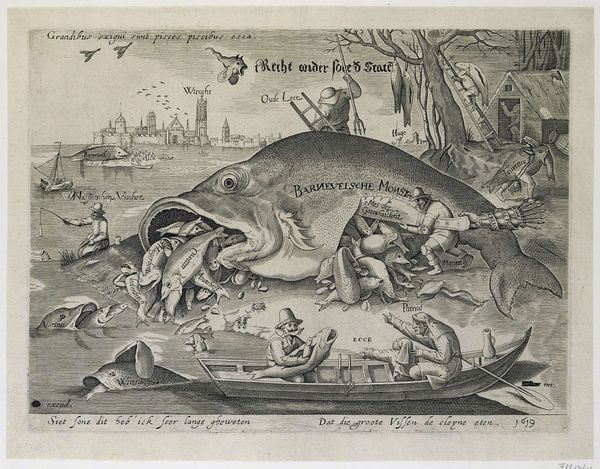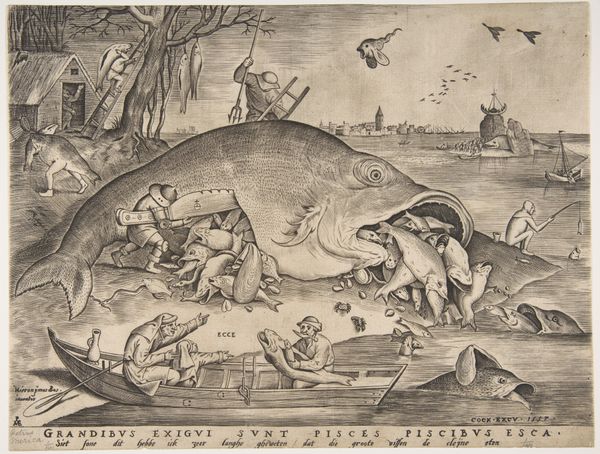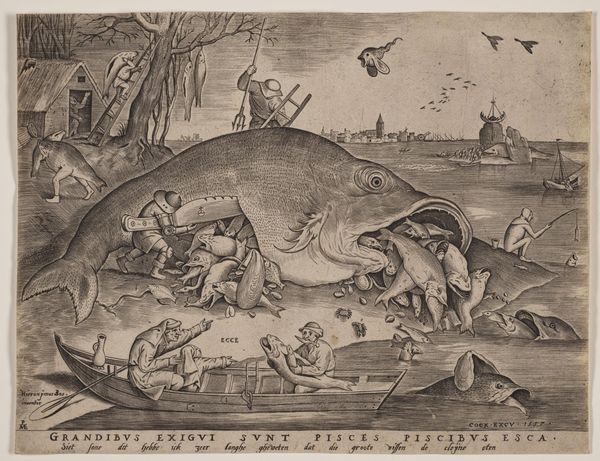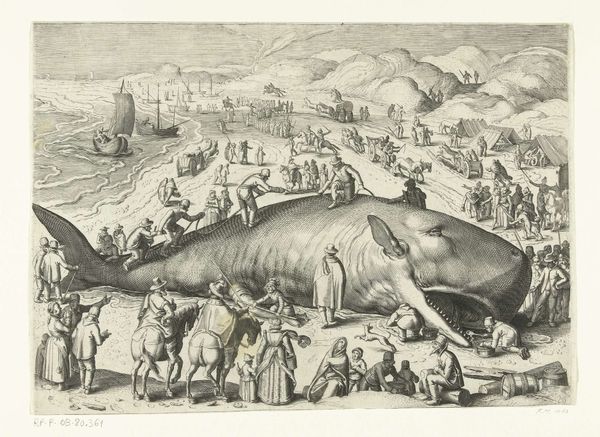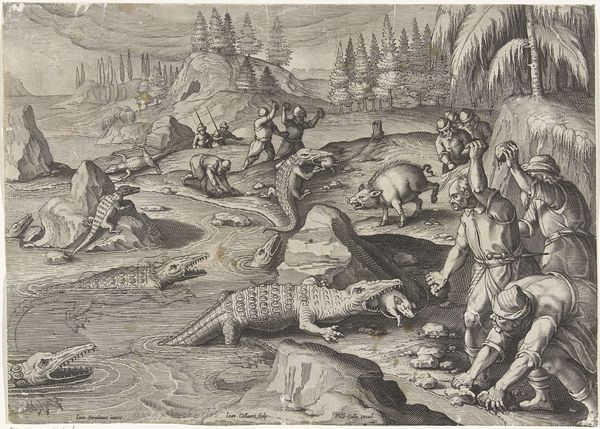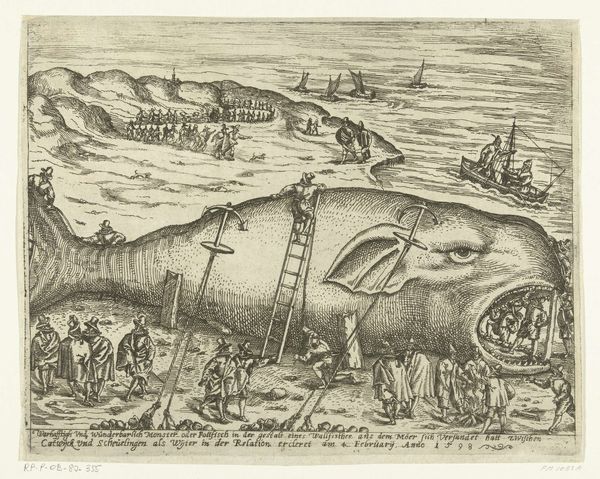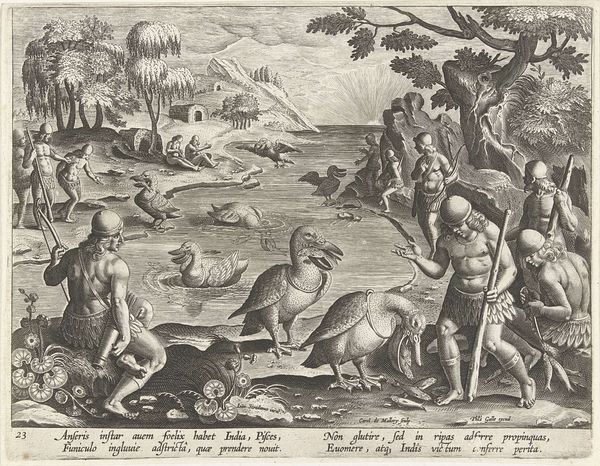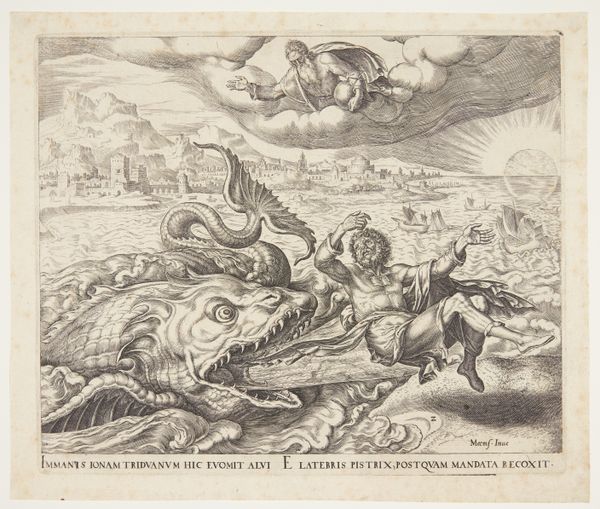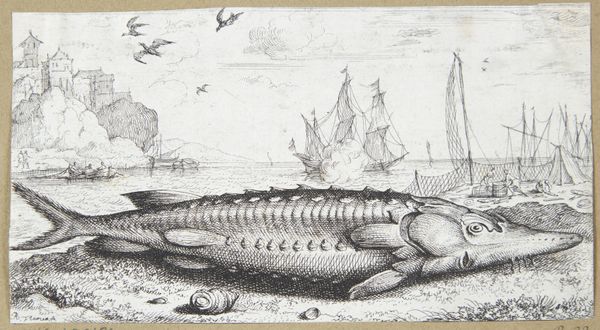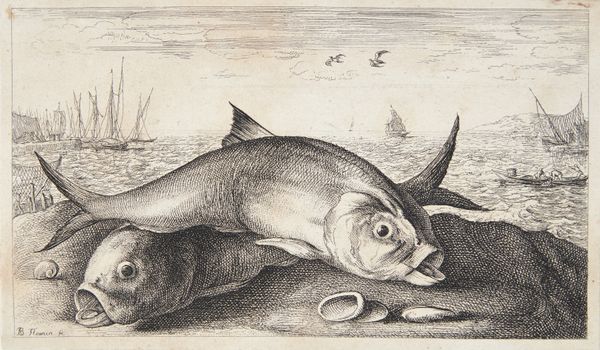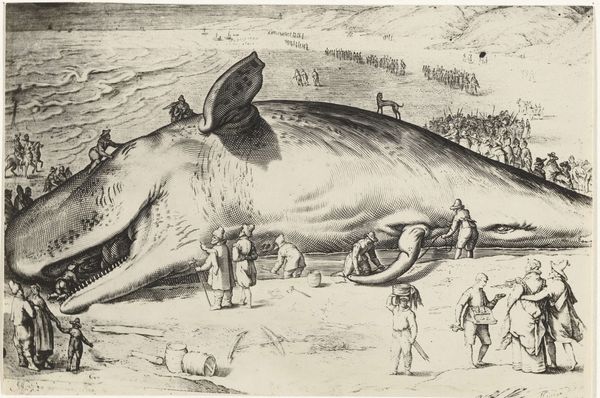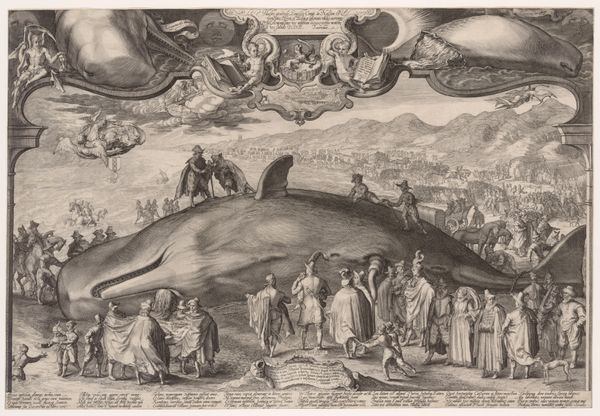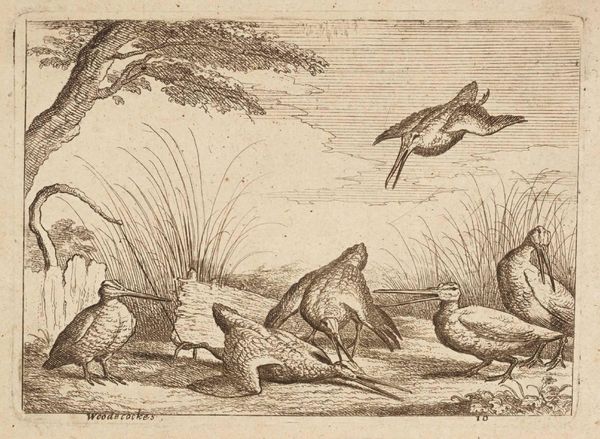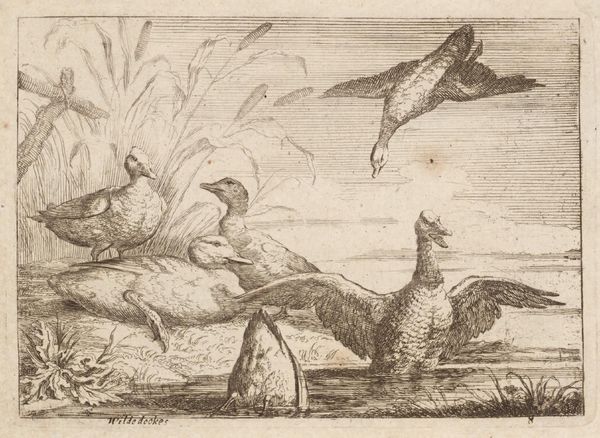
#
light pencil work
#
quirky sketch
#
pencil sketch
#
personal sketchbook
#
sketchwork
#
pen-ink sketch
#
sketchbook drawing
#
pencil work
#
sketchbook art
#
fantasy sketch
Dimensions: height 221 mm, width 294 mm
Copyright: Rijks Museum: Open Domain
Curator: This intriguing sketch, titled "Grote vissen eten de kleine vissen," roughly translated to "Big Fish Eat Little Fish," was created sometime between 1601 and 1652 by an anonymous artist and is currently housed here at the Rijksmuseum. Editor: My immediate impression? Utter chaos, but captivating. There’s a strange amalgamation of marine life, human figures, and this unsettling feeling of one thing consuming another. It’s a bleak scene, even rendered in sketch form. Curator: Absolutely, the "bleakness" you are perceiving, is precisely rendered with pen and ink and invites an interpretation of the material realities represented: resources being aggressively harvested by larger figures in an ecosystem of unequal exchange, both figuratively and literally. The sheer act of committing this to paper, using readily available tools, signifies a critique accessible even to the common viewer of that period. Editor: And within that visual ecosystem of 'unequal exchange,' we find potent symbolism! The oversized fish devouring smaller ones points to cycles of power and the often brutal hierarchy inherent within society and nature, like a Boschian nightmare about to unfold. And look closely—the figures around this leviathan. Even humans are caught in this act! Curator: Precisely! Consider the labour visibly depicted around the mouth. People are literally sawing bits out of the giant fish! Are they trying to benefit from its massiveness? To extract something valuable from it? Is that, too, symbolic of exploitation? It’s fascinating to consider that, as the artist leaves them nameless. This places attention onto labor and resource extraction within broader themes of societal struggle. Editor: Agreed, that kind of dark fable plays directly into period anxieties! This is very likely commentary of social inequality; a fear that the common folk will always get swallowed up by the wealthy. These sorts of anxieties run through art and literature throughout history, but it's expressed here with unusual directness. What seems unique is its somewhat self-aware visual presentation that everyone benefits (or exploits?) from. Curator: Precisely. By bringing these actions to the common paper, such visuality becomes an accessible form to dissect our entangled participation within the modes of larger scale destruction. Editor: So while the work may appear as a 'fantasy sketch,' it ultimately makes palpable both period fears, and timeless social critiques! A potent piece, even now. Curator: Indeed! And by viewing it through a materialist lens, we see the accessibility and the potential to challenge social narratives encoded into every pen stroke, every mass extraction.
Comments
No comments
Be the first to comment and join the conversation on the ultimate creative platform.
